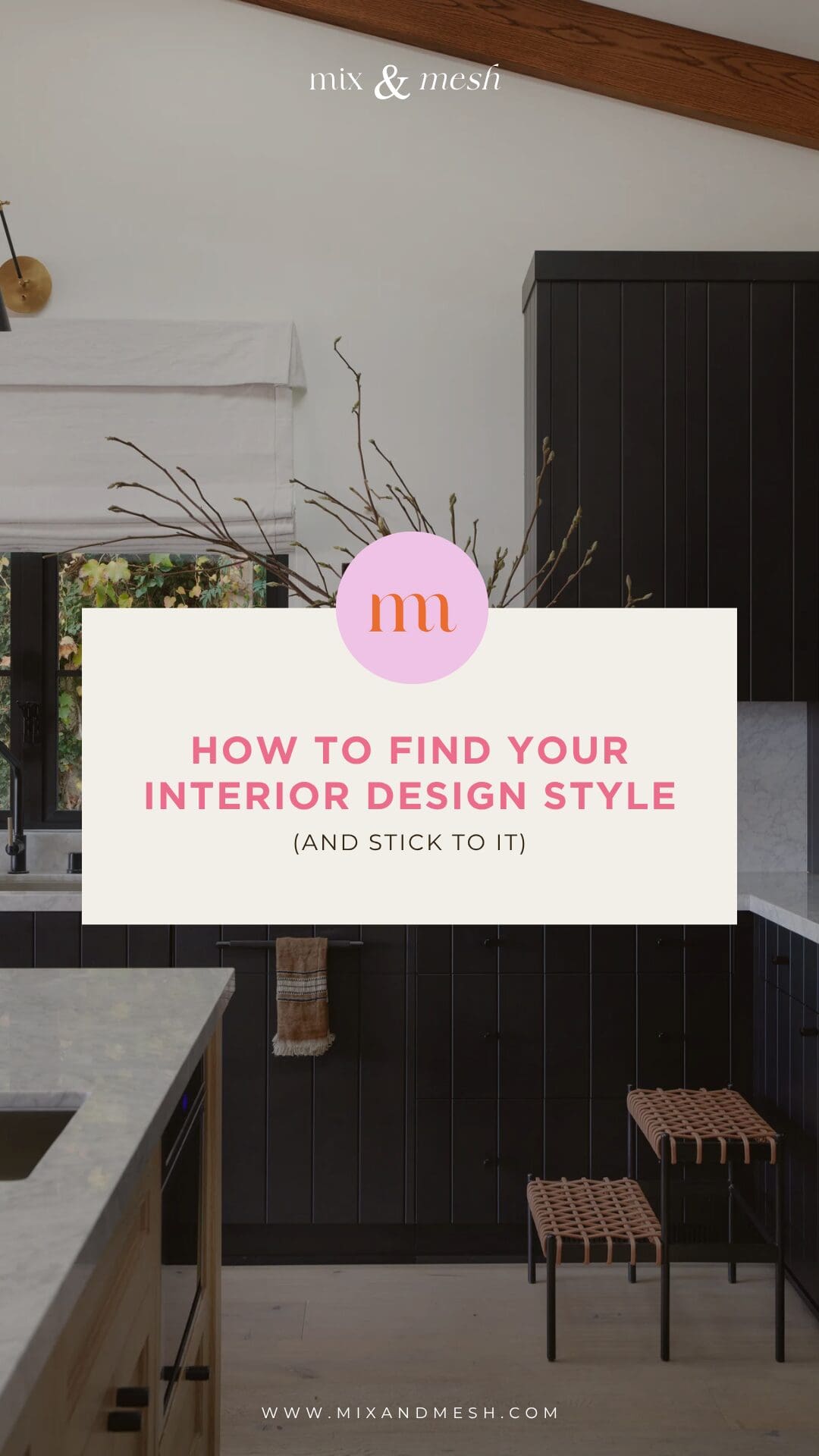If you’ve ever saved 50 wildly different inspiration photos and thought, “Why do I like all of these?” — you’re not alone.
Most people don’t walk into the design process with a fully formed, Pinterest-perfect style. Instead, they’ve got screenshots, mismatched boards, and a lot of “I’ll know it when I see it” energy.
But here’s the truth: you don’t need a style label to make confident design choices.
You just need clarity around what you actually love — and how to keep it cohesive throughout your home.
This post will walk you through a simple process to filter your inspiration and define your personal design language so that every decision you make moving forward feels aligned and intentional.
This is part of my 7-Day Finish Confidence Challenge series, a guided series that helps you work through your selections one step at a time. If you’re just jumping in now, no worries — this one can stands on its own.
Step 1: Ditch the Labels (For Now)
Terms like “modern farmhouse” or “mountain transitional” might sound great in theory — but they’re often vague, overly broad, and packed with trends that shift every six months.
Instead of chasing a label, start by looking at three core style categories. These are more about structure than mood:
- Modern – Think clean lines, minimal ornamentation, smooth finishes, sleek profiles
- Traditional – Rich textures, visible grain, timeless detailing, more formality
- Transitional – A balanced mix of both — modern shapes with softer, warmer finishes
This doesn’t mean you have to pick one. But it gives you a clearer lens for understanding what you’re drawn to (and why something feels off when it doesn’t fit).
Step 2: Gather Your Inspiration and Analyze It
Now’s the time to go back to those saved folders. Pull out 3 to 5 favorite images per space — not everything, just the top images that give you that “yes” feeling.
Once you’ve got them side by side, look for patterns:
- Are most of your cabinets painted or stained?
- Are you seeing warm metals like brass and bronze, or cooler ones like chrome and nickel?
- Is the palette soft and natural, or bold and contrast-heavy?
- Do your spaces feel layered and textured or minimal and crisp?
Pro tip: The patterns are usually there — even if they feel subtle. Pay attention to how the spaces make you feel, not just what they look like.
Step 3: Name Your Style in Three Words
Once you’ve studied your inspiration, write down three words that describe the feeling or aesthetic you want your home to have.
These aren’t formal style names — they’re guideposts.
Examples:
- Organic, timeless, moody
- Crisp, classic, welcoming
- Earthy, modern, relaxed
- Bright, airy, minimal
These three words become your filter. When you’re choosing tile, lighting, or cabinet hardware, you can ask: Does this align with the feeling I want my home to have?
Step 4: Check for Flow Between Rooms
Defining your style is one thing — making it cohesive is another.
Open up your images for adjacent spaces (like kitchen to living, or bedroom to bath) and ask yourself:
- Do the tones, materials, or textures feel related?
- Would someone walking through the house feel a shift — or a flow?
- Are there any elements that feel like they belong in a totally different house?
Pro tip: You can absolutely mix styles. The key is to stay consistent with tone — soft vs. bold, textured vs. sleek, warm vs. cool — and repeat a few core elements across rooms (like metal finishes, wood tones, or tile patterns).
Step 5: Figure Out How You Feel About Color
This is a big one — especially when it comes to permanent finishes.
Are you a:
- Color Committer – You want bold tile, green cabinets, statement stone. You’re not afraid of commitment and love a “wow” moment.
- Color Flirter – You keep your foundational finishes neutral and bring in personality through furniture, art, textiles, and lighting.
Knowing which camp you’re in can help prevent second-guessing when it comes time to finalize tile or cabinet paint. Both are great options — it’s just about picking the one that fits your comfort zone.
Why This Step Matters
So many homeowners feel overwhelmed not because they don’t have good taste — but because they haven’t filtered their inspiration in a way that makes decision-making easier.
By grounding your style with just a few core reference points — and checking for consistency across spaces — you’ll move through the rest of your selections with way more ease and clarity.
And no, you don’t need a name for it. You just need to know what you love — and how you want your home to feel.
Ready for What’s Next?
👉 Day 05: What to Pick and When: Interior Finish Selection Timeline
If you want a second set of eyes on your Pinterest board, or help identifying your core style direction, you can always book a 1:1 consult or join DesignDirect to get personalized design coaching as you make decisions.
